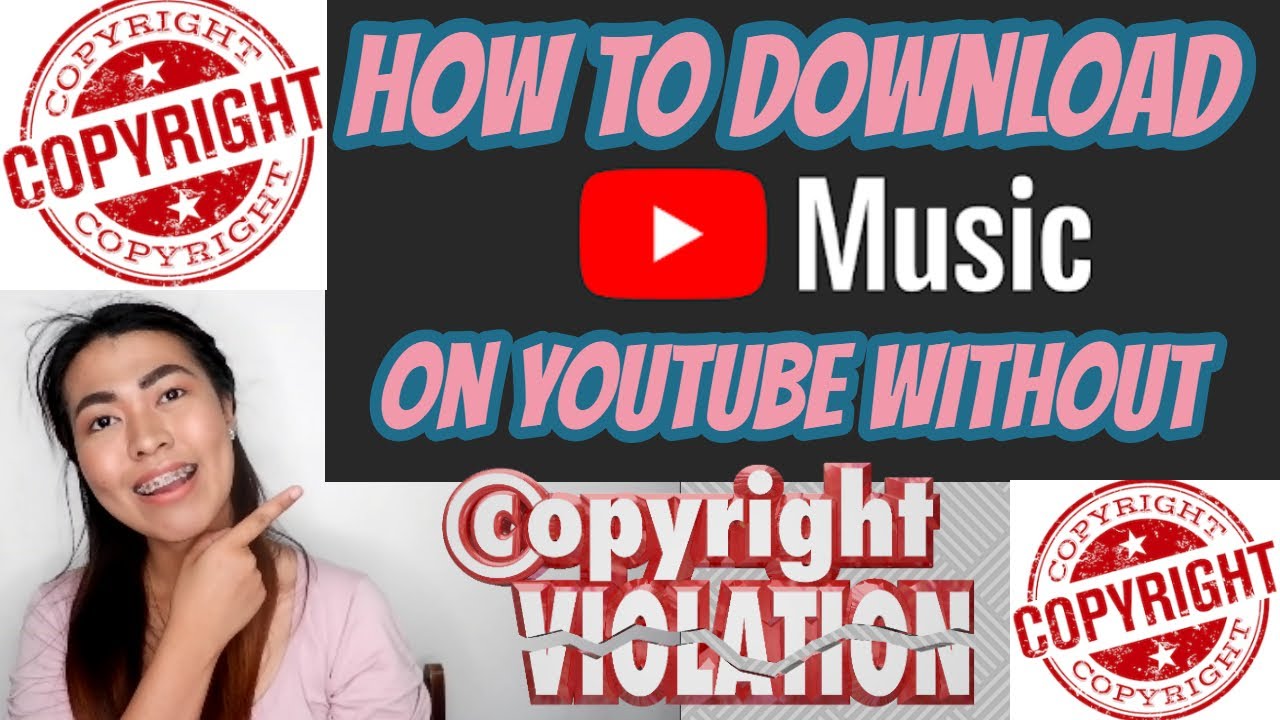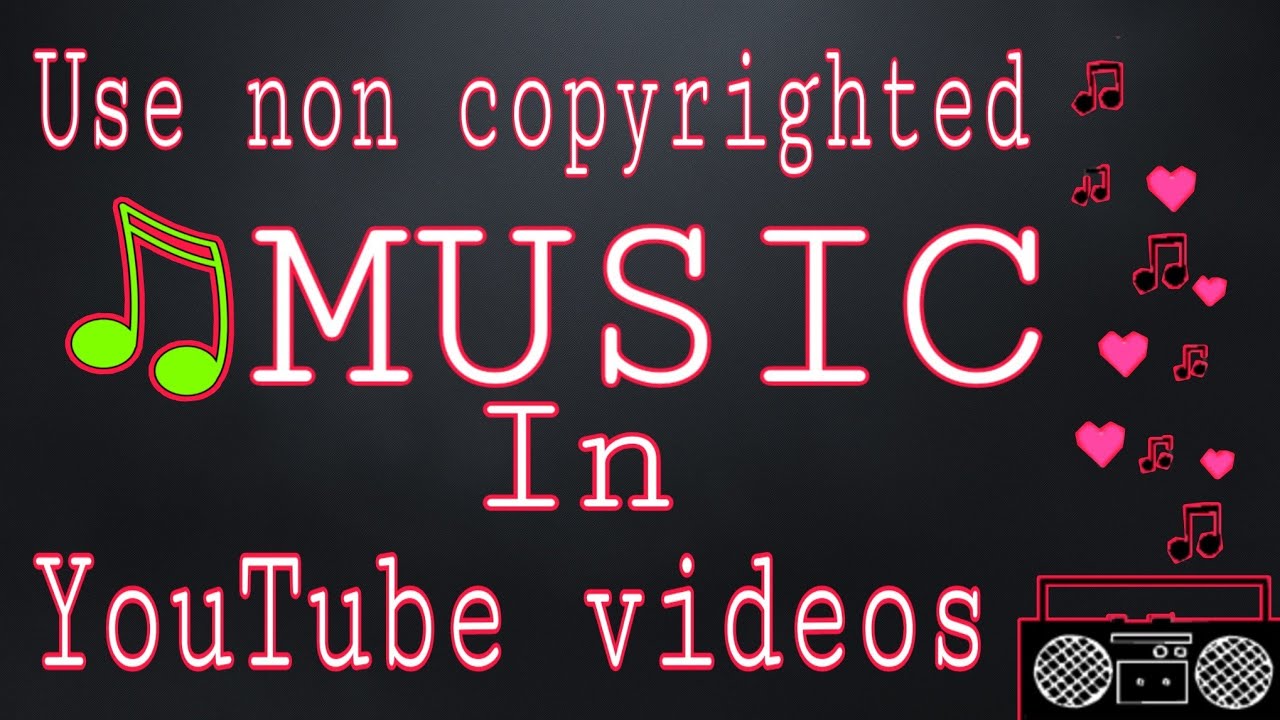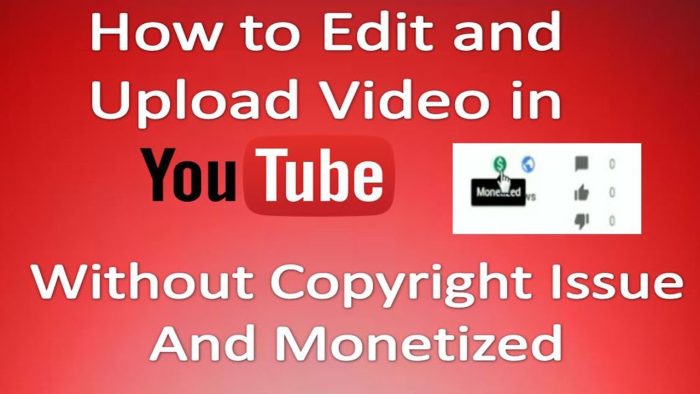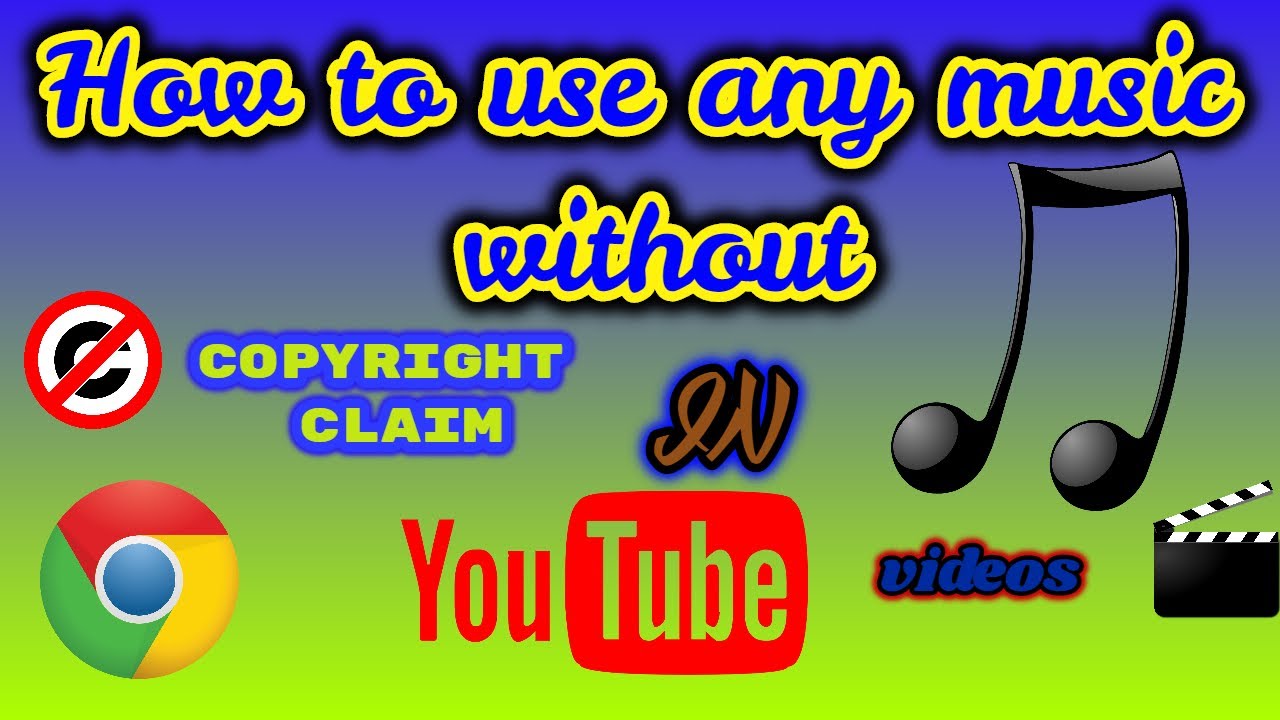When it comes to using music on YouTube, understanding copyright is essential. Copyright laws protect the rights of creators, meaning that using their music without permission can lead to your videos being taken down or your account getting a strike. So, what does this mean for YouTube creators like you?
Every time you upload a video that includes music, YouTube’s Content ID system scans it for copyrighted material. If it finds music that it recognizes, there are a few possible outcomes:
- Monetization Restrictions: The copyright owner may choose to monetize your video, taking all or a portion of the ad revenue.
- Video Block: Your video might be blocked in certain countries or even globally.
- Removal: In some cases, your video could be taken down altogether.
To navigate these tricky waters, it’s important to know what constitutes copyright infringement. Simply put, if you didn’t create it or obtain explicit permission to use it, you’re likely skating on thin ice. Even short snippets of a song can sometimes trigger copyright claims. Therefore, let's dive deeper into alternate music strategies!
When considering music for your YouTube videos, you might wonder about the concept of "fair use." While there are some allowances for commentary or educational content, relying on this can be risky and is often a gray area in the eyes of copyright law. Unfortunately, fair use can't be guaranteed, and it's generally safer to seek out music that is copyright-free.
To sum it up, understanding copyright on YouTube not only protects your content but also fosters a creative and fair environment for all creators. Being mindful of music use can save you from unnecessary headaches down the line. Now, let’s explore why it's crucial to use copyright-free music in your videos.
The Importance of Using Copyright-Free Music

Using copyright-free music in your YouTube videos is not just a safe choice; it’s a smart one. Let’s break down the benefits of incorporating copyright-free music into your content.
1. Avoid Legal Issues: This is the most obvious advantage. Copyright-free music ensures you’re not breaking any laws. You can enjoy peace of mind, knowing your videos won’t be pulled down or muted due to copyright infringement. This way, you can focus on creating great content instead of worrying about a legal mess.
2. Enhance Storytelling: Music helps convey emotions and set the tone of your videos. Using copyright-free music allows you to create a more immersive viewing experience. For example, an energetic track can elevate a lively vlog, while soft music can enhance the emotional depth of a storytelling piece.
3. Build Your Brand: Consistent audio branding can help you establish a unique identity. By choosing specific copyright-free tracks, you can create a signature sound that viewers associate with your content. Just like logos and colors, your music choice can become part of your brand's recognition.
4. Support Independent Artists: Many copyright-free music sources feature the work of independent artists who often rely on platforms like YouTube for exposure. By using their tracks, you can help elevate new talent while also gaining unique audio content that stands out in a sea of mainstream music.
5. Accessibility and Variety: With numerous online resources, finding copyright-free music is easier than ever. Websites like Bensound, Incompetech, or Artlist offer vast libraries of music in multiple genres. This means you’ll always have the perfect tune at your disposal, regardless of your content’s vibe or theme.
In conclusion, using copyright-free music is vital for every YouTube creator. Not only does it save you from potential legal troubles, but it also enhances your storytelling and helps establish your brand. With a plethora of options available, you can find the right music to make your videos shine. So go ahead, explore your options, and let the perfect soundtrack elevate your content!
Also Read This: How to Listen to YouTube with Screen Off on Your Mobile Device
3. Finding Copyright-Free Music for Your YouTube Videos

If you’re venturing into the realm of YouTube content creation, you’ll quickly realize the crucial role that music plays in setting the mood and enhancing your videos. However, navigating copyright issues can be a minefield. The good news? There are plenty of places to find copyright-free or royalty-free music! Here’s how to locate it.
First off, let’s clarify what we mean by "copyright-free." This term often refers to music that is either in the public domain or music that has been licensed so creators can use it without the need for paying royalties or seeking permission.
Here are some excellent sources you can explore:
- Public Domain Archives: Websites like Archive.org and Musopen host music that has entered the public domain, meaning you can use it freely.
- Creative Commons Licensed Music: Look for tracks with a Creative Commons license. Websites like Free Music Archive and ccMixter allow you to filter tracks based on the type of license they carry, making it easy to find music that suits your needs.
- Stock Music Websites: Platforms like Bensound and PremiumBeat offer a variety of royalty-free music for your projects, often for a small fee.
- Independent Artists: Don’t forget the power of supporting independent artists! Websites like SoundCloud or Bandcamp often feature tracks that artists are willing to share under special agreements. Always read the licensing terms to ensure you're in the clear!
Before you use any music, be sure to read the licensing agreements or terms of service. Some tracks may require attribution, which means you’ll need to credit the artist in your video description. Keep a close eye on how music licenses work; it’ll save you lots of headaches down the line!
Also Read This: How Much Data Does YouTube TV Use for Streaming Costs and Usage
4. Using YouTube's Audio Library

YouTube's Audio Library is a fantastic resource for creators looking to find high-quality, copyright-free music for their videos. It's an integral part of the YouTube experience that makes it easier to find the perfect soundtrack without the legal tangles. Let’s dive into how you can use it effectively!
To access the Audio Library, simply follow these steps:
- Log into your YouTube account.
- Click on your profile icon at the top right corner.
- Select YouTube Studio.
- On the left sidebar, you’ll see Audio Library. Click on it!
Once you're in the Audio Library, you can browse through a wide range of music tracks and sound effects. The library is user-friendly, featuring a search bar and filters that allow you to sort music by:
- Genre: From pop to classical, choose the vibe that suits your video.
- Mood: Whether you want something upbeat, dramatic, or calming, you can filter by mood.
- Duration: If you need a specific length for your piece, this filter is particularly handy.
Each track listed in the library comes with clear licensing terms. If a track is marked with a note regarding the attribution, you’ll need to credit the artist in your video description. If it’s not marked, you can use it freely without giving credit.
One of the best aspects of YouTube's Audio Library is the quality of the music available. Many tracks are composed by talented artists and musicians who aim to enhance your storytelling.
So, the next time you're creating a video, don’t forget to explore YouTube's Audio Library! It can be a game changer in ensuring your content is engaging while remaining copyright compliant.
Also Read This: Can I Record YouTube TV and How to Save Your Favorite Shows
5. Exploring Creative Commons Licenses

If you’re navigating the vast world of YouTube, understanding Creative Commons licenses can be a game changer. Why? Because they provide a legal framework that allows creators to share their music while enabling you to use it under certain conditions. Here’s a breakdown:
- Attribution (CC BY): You can use the music freely, even for commercial purposes, as long as you give appropriate credit to the original creator.
- Attribution-ShareAlike (CC BY-SA): Similar to CC BY, but if you create new works based on the music, you must license them under the same terms.
- Attribution-NoDerivs (CC BY-ND): You can use the music, but you can’t make modifications to it. Perfect if you want to keep it as is!
- Attribution-NonCommercial (CC BY-NC): You can use the music for non-commercial projects, with credit, but you can’t make money from it.
- Attribution-NonCommercial-ShareAlike (CC BY-NC-SA): Similar to CC BY-NC, with the added twist that new works must also be non-commercial and shared alike.
- Attribution-NonCommercial-NoDerivs (CC BY-NC-ND): The strictest of the licenses – you can share the music, but only in its original form, and for non-commercial purposes.
Now, how do you find this music? YouTube has a Creative Commons filter in its audio library where you can explore thousands of tracks. When searching, make sure to read the specific licensing terms attached to each track. Not all Creative Commons licenses are equal, and understanding these nuances can protect you from potential copyright strikes.
Remember, while Creative Commons licenses offer a pathway to use tracks legally, always, always give credit! This is not just a courtesy but a necessary requirement for the majority of these licenses. Keep an eye on the creators' specific credit requirements; sometimes they prefer links or specific wording.
Also Read This: Where is Fred from YouTube Now? A Look at His Life After Fame
6. Custom Music Solutions and Composing Original Tracks
If you're feeling especially ambitious, why not consider creating your own music tailored specifically for your YouTube content? The beauty of composing original tracks is that you have complete control over your music and, of course, full ownership. Here’s how you can approach this:
1. Identify Your Needs
What kind of vibe are you aiming for? Is it upbeat, somber, or perhaps atmospheric? Narrowing down the style of music you require allows you to channel your creativity more effectively.
2. Use Music Creation Software
There are various digital audio workstations (DAWs) that cater to different skill levels:
- GarageBand: A fantastic starting point for beginners on Mac. It’s user-friendly and packed with features.
- FL Studio: Great for electronic music and has tons of tutorials available online.
- Logic Pro: A step up from GarageBand, offering more tools for serious creators.
- Ableton Live: Perfect for live performances and looping music; it's a favorite among electronic artists.
3. Collaborate with Musicians
If composing isn't your strong suit, consider reaching out to local musicians or friends who create music. Platforms like SoundBetter connect you with freelancers who can craft custom tracks tailored to your specifications.
Using custom tracks not only enhances your content’s quality but can also create a unique brand signature that resonates with your audience. You can develop a distinctive style that sets your channel apart from the competition, making it instantly recognizable and memorable.
So whether you lean towards Creative Commons music or decide to roll up your sleeves and create something unique, you’ll find that using music on YouTube doesn’t have to be a daunting task. Just keep your content goals in mind, and you’re sure to find the perfect soundtrack! Happy creating!
Also Read This: Scheduling Shorts on YouTube – A Guide to Planning Your Content
7. Attributing Music Properly to Avoid Copyright Claims
When diving into the world of YouTube, one critical element to master is the proper attribution of music. Attribution isn't just a formality; it's a way to show respect to the creators of the music you love. Plus, it can help you steer clear of copyright claims! Here’s a quick guide on how to attribute music correctly:
1. Know the License Type: Before you use any music, make sure you understand its license. Creative Commons licenses are popular among independent artists.
- CC BY: You can use the music for any purpose, even commercially, as long as you give proper credit.
- CC BY-SA: Similar to CC BY, but if you remix the music, you need to share your new work under the same license.
- CC BY-ND: You can use the music without changing it, but attribution is still required.
- CC BY-NC: You may only use the music for non-commercial purposes, with proper credit.
2. Provide Clear Attribution: When you attribute music in your YouTube video, consider including the artist's name, track title, and a link to the song or license details. Here's a template you can follow:
"Music: '[Song Title]' by [Artist Name] (link to the song), licensed under [License Type] (link to license)."
By doing this, you're not only giving credit but also guiding your audience to explore more of the artist's work!
3. Use the Description Box Wisely: YouTube gives you the chance to include notes in the video description. Make it a habit to copy your attribution here. Not only does it ensure compliance with license requirements, but it also helps your audience understand where the music came from. Remember, the more specific you are, the better!
4. Create a Credits Screen: For videos that feature multiple music tracks, consider adding a credits screen at the end of the video. This approach is especially helpful for lengthy videos. List all the tracks, artists, and license information here. It not only looks professional but also makes it clear to the viewers who contributed to your content.
In conclusion, by attributing music properly, you’re safeguarding your channel while honoring the artists who enrich our lives with their creativity. So next time you use a track, take the extra moment to give it the credit it deserves!
Also Read This: Why Are Helicopters Flying Over Boston Right Now? Investigating YouTube Videos on Live Events
8. What to Do If You Encounter Copyright Issues
Encountering copyright issues on YouTube can be daunting, but don’t panic! Here’s a straightforward guide on how to tackle these challenges if they arise:
1. Identify the Issue: The first step is understanding what kind of copyright issue you're facing. Common situations include:
- Content ID Claims: YouTube uses an automated system to match uploaded videos with copyrighted content. If you receive a notification about a claim, review the details carefully.
- Strikes: A copyright strike is more serious than a claim and can affect your channel's standing. If you receive one, read up on the specifics, including deadlines and potential penalties.
2. Review Your Options: If a claim is lodged against your video, you typically have a few options:
- Agree with the claim: If the claim is valid, it might be best to accept the terms, which could involve revenue sharing with the copyright owner.
- Dispute the claim: If you believe you’ve used the music within fair use guidelines, you can dispute the claim. Be prepared to provide a rationale.
- Remove the music: Another option is to edit your video and replace the claimed audio with royalty-free music. This option is often the simplest way to clear up the issue.
3. Learn from the Experience: Every copyright encounter is a learning opportunity. Keep a record of the music you've used, along with the corresponding attribution, to avoid similar problems in the future. Establish a checklist for your videos, ensuring that all used content meets copyright guidelines.
4. Seek Help if Needed: Don't hesitate to reach out for assistance! YouTube has resources and community forums where you can get advice from experienced creators. If a situation escalates, consider consulting a legal professional specializing in copyright law.
Remember, copyright issues can happen to anyone, and taking proactive steps will continue to protect your creative efforts. Stay informed, and keep making great content!
Best Practices for Using Music on YouTube
When it comes to incorporating music into your YouTube videos, navigating copyright laws can be challenging. Here are some best practices to ensure you use music legally and efficiently:
- Use Royalty-Free Music: Many platforms offer music tracks that are free or require a one-time fee. Sites like Bensound, Purple Planet, and Incompetech provide great options.
- Check YouTube’s Audio Library: YouTube itself provides a comprehensive library of music and sound effects that are free to use. Make sure to check the license requirements for each track.
- License Music: If you want to use popular songs, consider obtaining a license from the copyright owner. Services like SongFreedom or AudioJungle can facilitate this process.
- Credit the Artist: Even with royalty-free music, it’s good practice to credit the artist when required. This not only shows respect but can also enhance your video’s credibility.
- Be Cautious with Covers: If you're performing a cover of a song, be aware that while you might not need to get an explicit license, the original composer may still claim rights to the performance.
In summary, understanding copyright laws and utilizing the right resources are key to using music on YouTube without running into legal trouble. By following these best practices, you can enhance your videos while respecting the rights of musicians and composers.
 admin
admin








